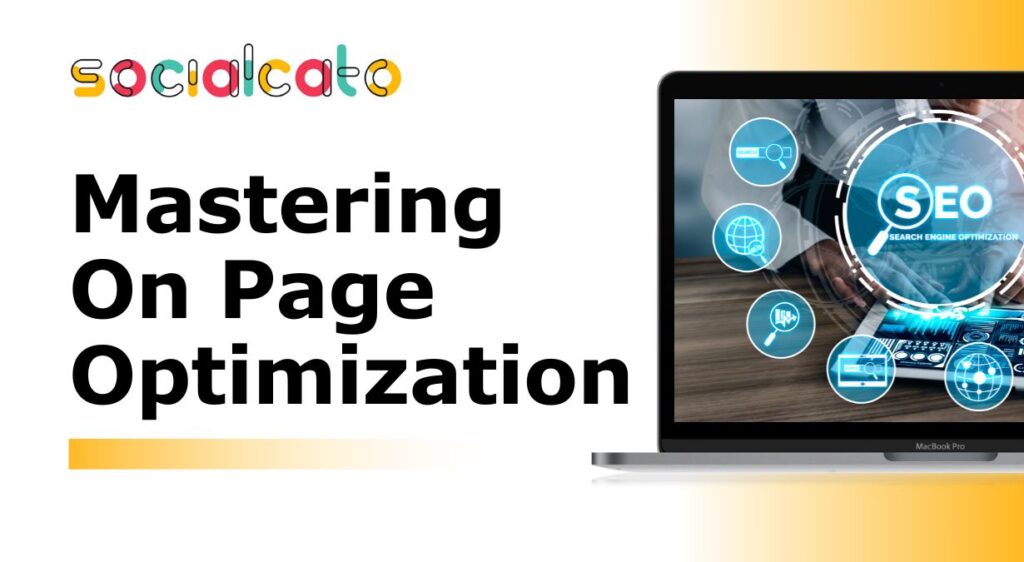Achieving SEO excellence demands meticulous optimization of every on-page component. To embark on this journey effectively, it’s essential to identify the most pivotal on-page element. But before diving into prioritization, let’s acquaint ourselves with the diverse facets of on-page SEO service.
Title Tag: The SEO Trailblazer
In-Depth Exploration:
- The title tag is the first interaction users have with your page on SERPs.
- Optimize within the 50 to 60 characters limit, ensuring a compelling and concise representation.
- Craft titles that resonate with user intent and incorporate primary keywords for enhanced visibility.
Meta Description: Crafting the Click-Worthy Preview
Going Beyond the Basics:
- The meta description is your opportunity to entice users with a concise snippet of your content.
- Utilize the 150–160 characters effectively to provide a compelling preview and encourage clicks.
- Experiment with language that evokes curiosity and aligns with user expectations.
Heading Tags (H1 to H6): Structuring Content Hierarchy
Strategic Hierarchy:
- Heading tags organize content hierarchy, aiding both users and search engines in understanding your page.
- Reserve H1 for the primary headline, maintaining clarity and differentiation from the title tag.
- Distribute subsequent headings strategically to convey a logical flow of information.
URL Structure: The Path to Accessibility
Navigating URLs Effectively:
- The URL structure serves as a pathway to your content and influences user experience.
- Optimize for relevance, utilizing a clear and concise format (e.g., www.domain.com/page-url/).
- Include primary keywords when applicable, contributing to search engine understanding.
Keywords: The SEO Connectors
Strategic Integration:
- Keywords are the foundation of SEO, connecting your content to user queries.
- Conduct thorough keyword research to identify relevant terms for incorporation.
- Integrate keywords seamlessly in titles, headings, and naturally throughout the content.
External Links: Building Credibility Brick by Brick
Quality Over Quantity:
- External links enhance your page’s authority, but their credibility is paramount.
- Link to reputable and relevant websites within your industry to bolster your page’s trustworthiness.
- Regularly audit external links to ensure continued relevance and reliability.
Internal Links: Navigating the Web of Connectivity
Strategic Interlinking:
- Internal links facilitate navigation for both users and search engine crawlers.
- Develop a cohesive internal linking strategy to guide users to related content.
- Use descriptive anchor text to provide context and enhance user experience.
Images: The Visual SEO Boosters
Optimizing Visual Assets:
- Images contribute significantly to on-page SEO by enhancing visual appeal.
- Optimize images for SEO by including descriptive captions and alt attributes.
- Compress images without compromising quality to improve page loading speed.
Readability: Elevating User Experience
User-Centric Content:
- Readability is a crucial aspect of user experience and, consequently, SEO.
- Craft content with concise sentences, avoiding jargon to cater to diverse audiences.
- Utilize subheadings, lists, and formatting to break up text and improve scanability.
Content Size: Striking the Balance
Quality Over Quantity:
- While there’s no fixed word count rule, prioritize the quality and relevance of content.
- Engage users with a well-crafted message that aligns with their expectations.
- Maintain a balance between meaningful content and optimal length for user satisfaction.
In conclusion, mastering on-page SEO involves a meticulous approach to each component. While the title tag emerges as the initial focal point, a holistic strategy that encompasses all elements ensures sustained success in the dynamic landscape of SEO. These detailed insights serve as a roadmap for navigating the complexities of on-page optimization.


